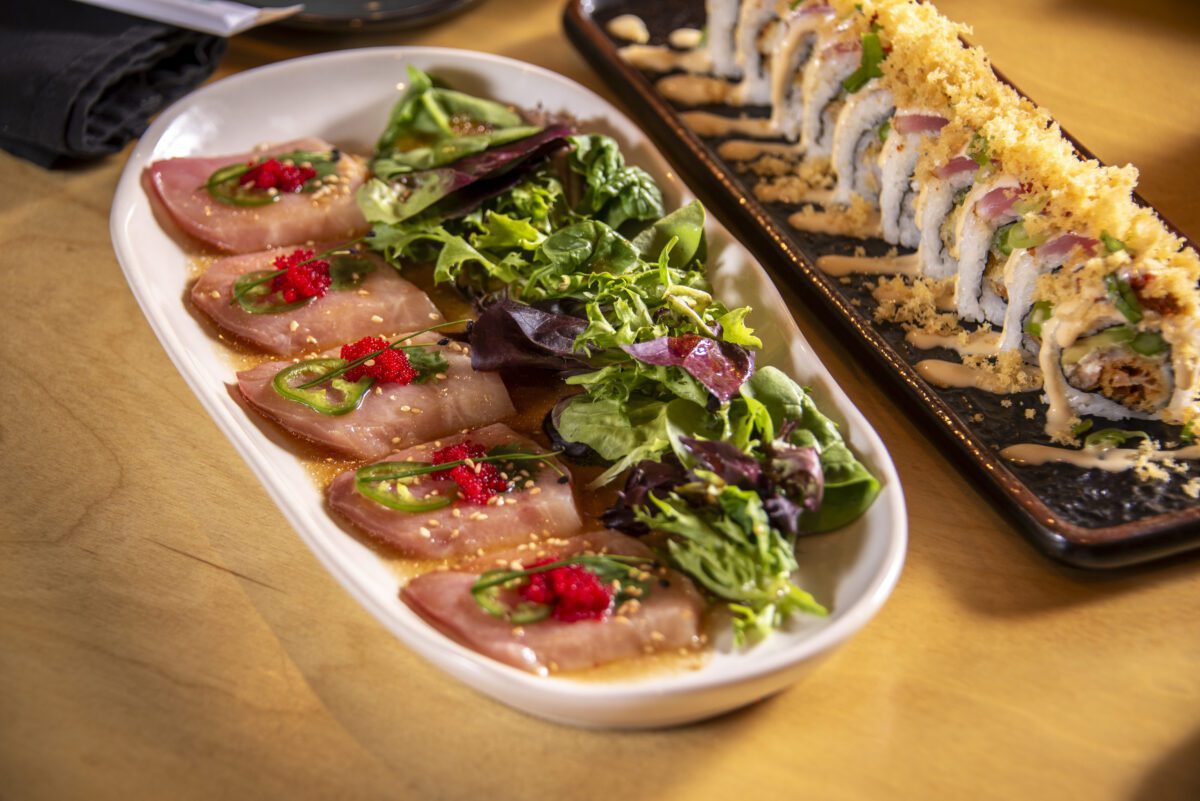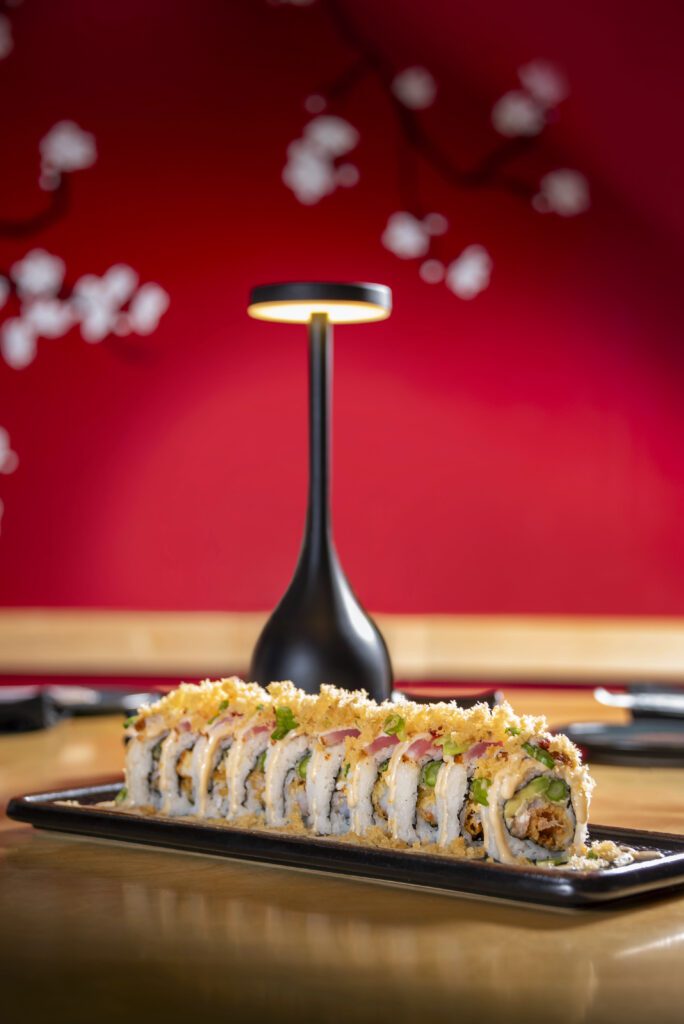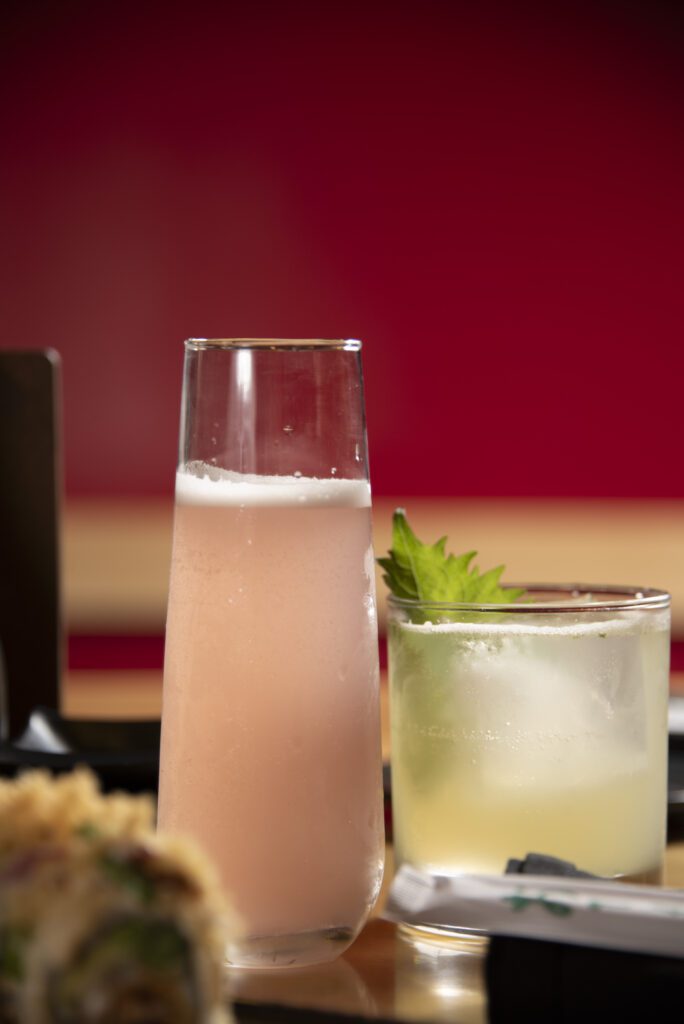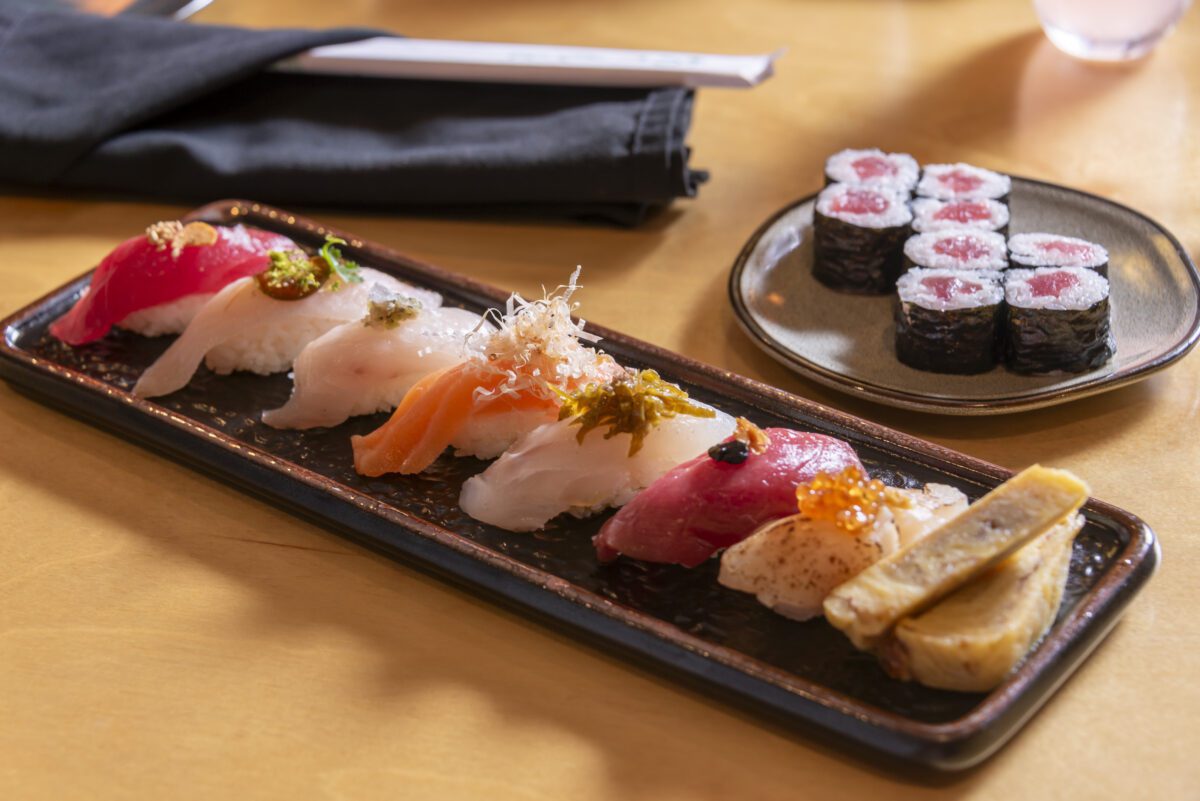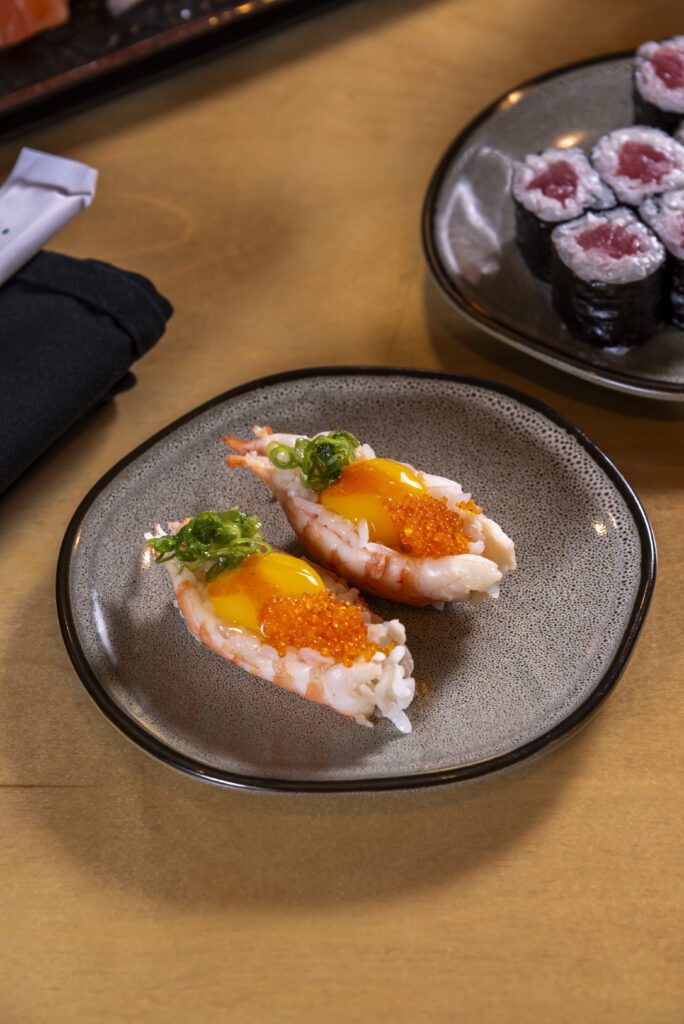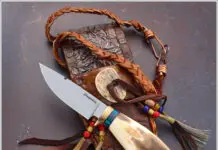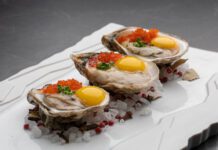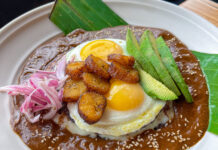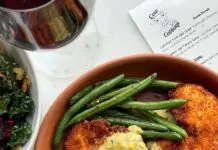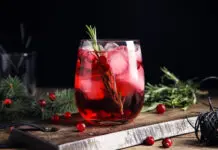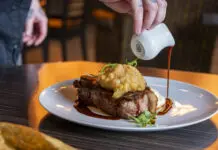Chimi’s on 81st and Sheridan looks about how you’d imagine, with a long bar, monochrome decor and a welcoming ambiance. The food, though, is better than you’re anticipating. That’s because when Brandon Fischer took over the Tulsa mini-chain, he spent five years improving every item on the menu — testing every dish several times over in his home kitchen. For that delicious birria recipe, for example, he burned through 150 pounds of beef.
This Chimi’s, though, has a surprise awaiting you. There’s a tiny button on one wall that says “push.” Do so, and a section of the wall slides away, revealing a bright and lovely room dominated by bold, Japanese-style murals of carp and cherry blossoms. Walk through that room, past the blonde wood dining tables, and push on the far wall. It opens to reveal another room with a gleaming sushi bar staffed with a team of expert chefs. This is Mr. Nobu’s Sushiya.
Nobu Terauchi, a Tulsa icon and a close friend of the Fischer family, made his fame by introducing sushi to Tulsa back in 1986. Realizing that Tulsans back then would not line up to eat raw fish on rice, he introduced a new innovation from California: Huge, crowd-pleasing maki rolls, over 100 kinds, with fanciful names like the Deadhead Roll.
Mr. Nobu’s is created to honor Terauchi, so of course there are lots of these rolls, and, says Fischer, “they’re really great.” But the primary focus here is on other things: traditional Edomae sushi, as served in Japan, and the Western fine-dining style that has evolved over the past two decades in upscale sushiyas in Los Angeles and New York.
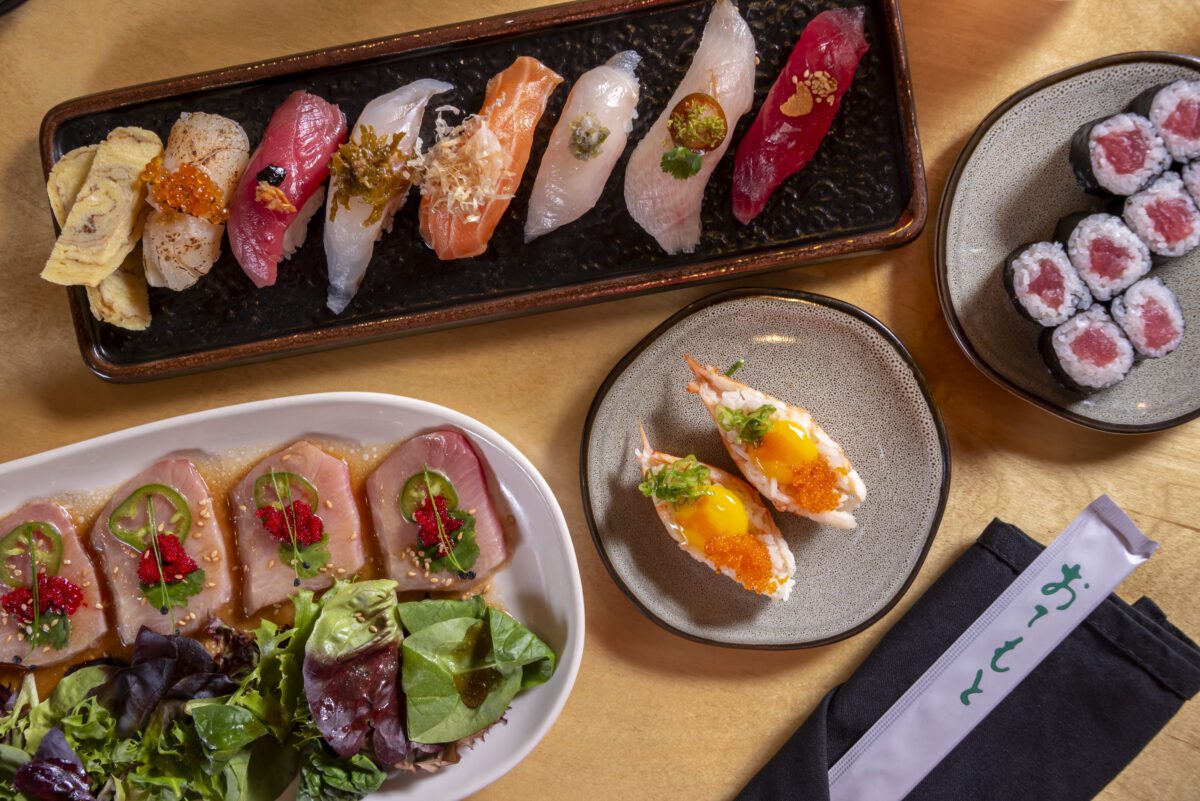
Whether or not a restaurant succeeds in this genre depends on three things: the fish, the rice and the chef.
Mr. Nobu gets its fish from two Texas distributors who, according to chef Josh Snow, source all their product from the famed Toyosu Market in Tokyo.
“With technology the way it is,” says Snow, “we get it as fast as Los Angeles does. The way we handle it is what keeps it fresh. Even the type of paper towel used to wrap the fish matters. Some fish has to be broken down right away, while other fish, such as tuna, is best kept uncut. I check all the fish coming in. I check all the fish being served. If it’s not fresh, I’m not serving it.”
Which is why the most prized cut, Bluefin tuna otoro, is often unavailable.
Many Americans pretty much ignore the rice but, says Snow, “rice is the most important part of sushi.”
They use Nishiki rice, cooked for 75 minutes, then cooled. At some point, vinegar, sugar and salt are mixed in.
“You can have the nicest fish,” says Snow, “but if you don’t have the rice right, it ruins the fish. As in many Asian cuisines, balance is key.”

And Snow should know – he’s been a sushi chef for fifteen years.
Sometime around the turn of the century, Japanese sushi chefs who had worked in Peru brought new ideas to Los Angeles. They put tiny dabs of exotic things never before considered for raw fish atop the nigiri. Done right, this complements and elevates the fish in delicious, surprising ways.
Those chefs pushed the envelope — and Mr. Nobu’s does too. You might find snapper from Japan topped with shishito pepper confit; salmon from the Faroe Islands with bonito flakes, shaved onions and ponzu sauce; or a sweet raw scallop from Hokkaido, served with Lithuanian yuzu kosho and smoked trout roe. All of this works perfectly.
The same creativity typifies bold small plates such as shrimp boats. The shrimp are steamed, marinated and coated with rice, then topped with a quail egg, Tabasco sauce, ponzu and flying fish roe. The tuna tartare is a whole mix of unexpected flavors.
Save room for dessert! Michaela, the pastry chef, prepares rich and satisfying desserts, including a vanilla bean cheese cake with Graham cracker sesame crust and yuzu citrus curd on top. There’s also a matcha coconut Tres Leches cake honoring the Mexican beginnings of Brandon Fischer’s restaurant career.
